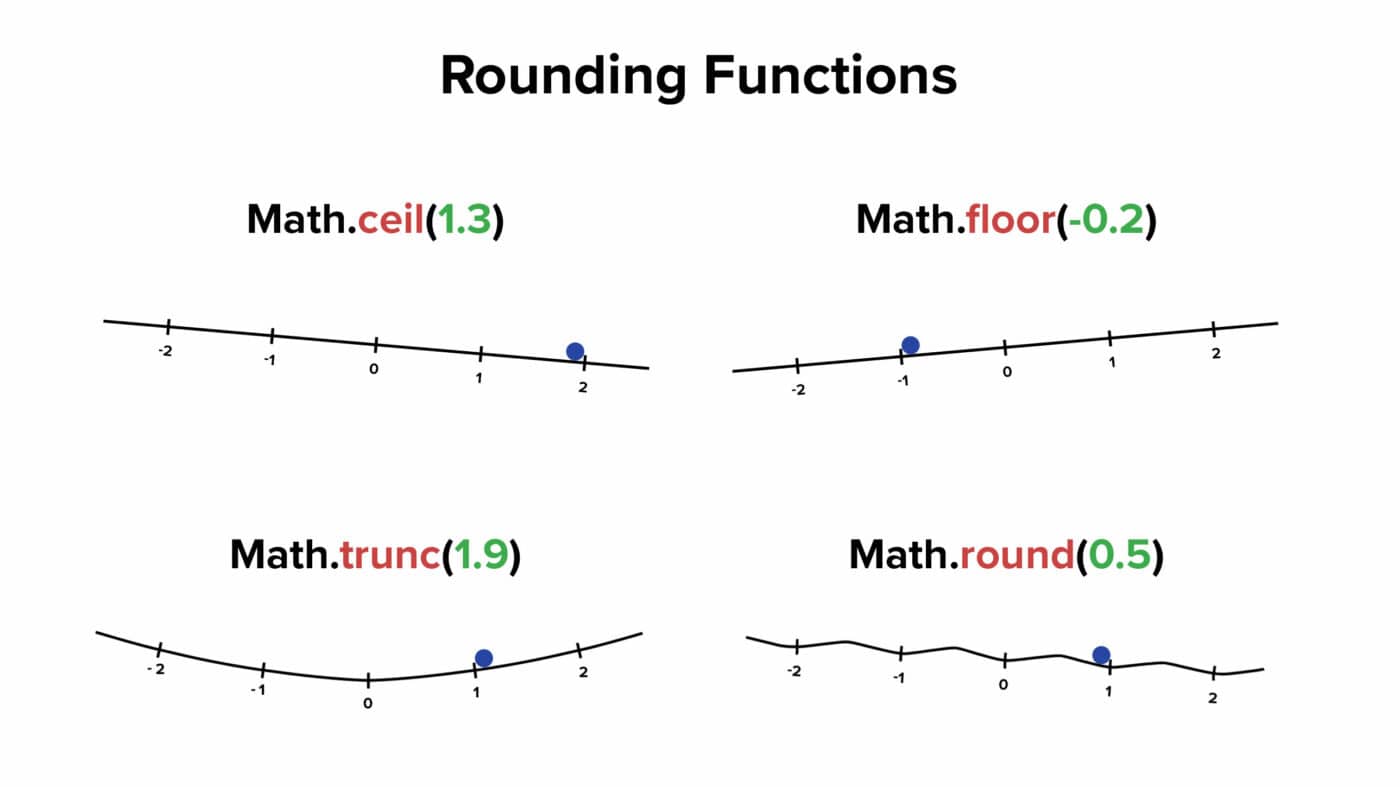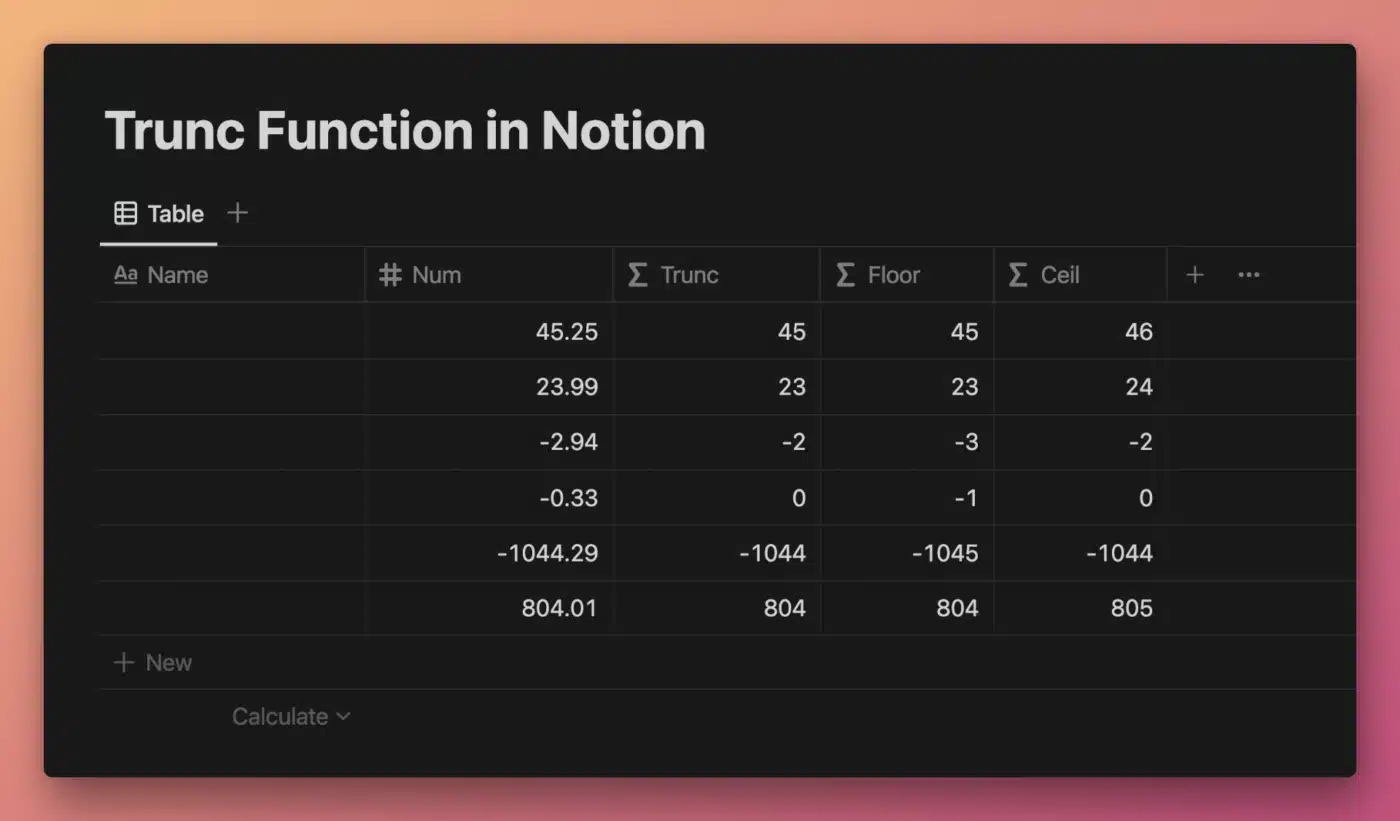The floor() function returns the largest integer that is less than or equal to its argument.
floor(number)
number.floor()
Code language: JavaScript (javascript)In other words, floor() rounds a non-whole number to the next smallest integer. When used on an integer, it will return that integer.
Example Formulas
floor(4.2) /* Output: 4 */
3.845.floor() /* Output: 3 */
floor(4) /* Output: 4 */
Code language: JavaScript (javascript)Negative Values
It’s worth noting that floor() rounds “downward towards negative infinity”, while its counterpart, ceil, rounds “upward towards positive infinity”

When a negative value is passed as floor()‘s argument, you’ll still get a smaller value.
floor(-3.7) /* Output: -4 */
Code language: JavaScript (javascript)floor() does not round “towards zero”, and ceil does not round “away from zero”.
In JavaScript, the Math.trunc function rounds “towards” zero. It simply removes all decimal values from a non-whole number – e.g. Math.trunc(3.7) == 3 and Math.trunc(-3.7) == -3.
Notion does not have a trunc() function, but you can create one using an if-then statement:
/* Assume a number property exists called Num */
prop("Num") >= 0 ? prop("Num").floor() : prop("Num").ceil()
Code language: JavaScript (javascript)Example Database
As stated above, Notion does not currently provide a trunc() function.
The example database below provides a working example of a trunc() polyfill (a.k.a. custom code that replicates the functionality of a missing function), which uses both floor() and ceil.
Floor and ceiling values are also provided for reference.

View and Duplicate Database

“Trunc” Property Formula
/* Written with ternary operator (? and :) */
prop("Num") >= 0
? floor(prop("Num"))
: ceil(prop("Num"))
/* Written with if() */
if(
prop("Num") >= 0,
floor(
prop("Num")
),
ceil(
prop("Num")
)
)
Code language: JavaScript (javascript)A proper trunc() function (which does not exist in Notion) would simply chop all of the digits after the decimal off of a number and return the integer.
To create an effective polyfill for this function, we must first determine if our input number is positive or negative. We do this with prop("Num") >= 0, though the same could be accomplished with the sign function: sign(prop("Num")) == 1
If the input number is positive, we pass it as an argument to floor().
If it is negative, we must instead pass it as an argument to ceil.
You can check this in the example table above by comparing the output in the Trunc column to that of the Floor and Ceil columns.
Other formula components used in this example:







